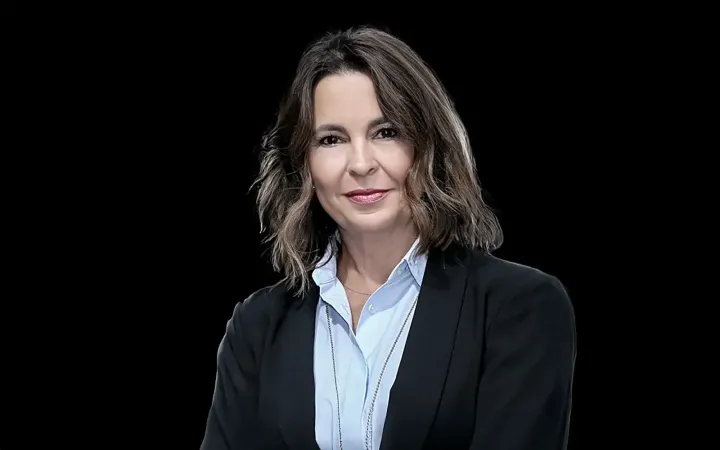Por Yuriria Rodríguez Castro
En mi entrega anterior para Opinión 51, recordaba que por lo menos una década atrás anticipamos que el terrorismo y el narcotráfico serían un mismo comportamiento criminal, lo que llevaría a la designación de ciertas organizaciones criminales como terroristas por parte de los Estados Unidos. https://www.opinion51.com/yuriria-rodriguez-2501-voluntad-decadencia
Ahora retomo el tema en desarrollo:
Cuando el fentanilo se impuso en el mercado de las drogas como un negocio criminal entre México y China, los gobiernos de EU comenzaron a hablar de terrorismo en el narcotráfico mexicano y el tema se colocó al centro de la agenda en materia de seguridad migratoria. Fue entonces que surgió esa oportunidad para unos, esa derrota cantada para otros, llamada “conveniencia” de reconocer el terrorismo del narcotráfico.
Pese a que fueron muchos los avisos previos, el gobierno mexicano sólo trató de calmar las exigencias de EU con la entrega de algunos líderes del Cártel de Sinaloa, además se aprobó una reforma judicial que lejos de ayudar a las relaciones bilaterales, las complicó todavía más. Aunado a esto, también se minimizó a Trump y sus arengas, pero tal como lo advertimos, fue de sus primeros documentos con carácter de ley.
El terrorismo, el populismo y el narcotráfico, son fenómenos sociales, políticos y de mercado, que surgieron históricamente juntos y por lo general, la historia misma les entrega un resultado opuesto a sus intenciones: cuando los anarquistas asesinaron al Archiduque Francisco Fernando en Sarajevo, se decía que era el fin de la tiranía y al contrario, lo que se desató fue la Primera Guerra Mundial. A la fecha, toda esa franja de los Balcanes está controlada por grupos terroristas paramilitares como Los Escorpiones y por escuadrones de autodefensas que representan —al igual que en México—el triunfo de la tiranía del crimen organizado, surgida del mismísimo Estado, para luego independizarse en grupos criminales autónomos.
Ejemplos de resultados contrarios a lo esperado por el terror hay muchos: cuando el militante populista John Wilkes Booth, asesinó a Lincoln bajo el gritó: “Muerte al tirano”, este magnicidio impuso siglos de tiranía en dicha nación.
Pocos saben que también la Segunda Guerra Mundial fue detonada por un atentado terrorista y una crisis migratoria, cuando el 9 de noviembre de 1938, el adolescente, Herschel Grynszpan, en protesta por la deportación de miles de judíos polacos, disparó contra un diplomático de la embajada alemana ubicada en París, lo que sirvió de excusa a Hitler y Goebbels para desatar el terror de Estado con el ataque masivo antisemita llamado Noche de los cristales rotos, preámbulo del Holocausto.
Aquí se puede observar cómo, desde el siglo XX, el terrorismo ya no busca derrocar al Estado, sino que aparece en su fase de crisis para proporcionar o sustituir la violencia que lo recupere.
El episodio de la sica ayuda a entender que el propósito del terrorismo es la visibilidad de la violencia desde la antigüedad, por lo que cualquier intento por invisibilizarla es la negación de este fenómeno: los sicari eran una secta palestina surgida por ahí del siglo I después Cristo y se llamaban así por utilizar una daga que ellos habían modificado en forma curva para realizar sus asesinatos en plazas públicas y derramar las vísceras de sus víctimas; de ahí a lo que se tiene ahora con los desmembrados en vía pública o los videos de homicidios desde el llamado género snuff hasta la llamada cultura del narcotráfico, son la demostración del mensaje criminal que une estos comportamientos.
Aún no se entiende que el terrorismo consiste en visibilizar al máximo la violencia en espacios públicos, incluso hay quienes piensan que el terrorismo y el narcotráfico se combaten sólo bloqueando sus finanzas. Así es como se han aplicado medidas estrictas para ahogar los centros de financiamiento y lavado de activos, pero la violencia visualmente extrema aumenta en países como México, donde estas medidas resultan contraproducentes, pues si antes las organizaciones criminales invertían dinero ilícito en negocios lícitos propiedad de los ciudadanos para lavar activos, ahora, como son bloqueados por fuertes medidas fiscales y bancarias, el crimen organizado se financia con el cobro de piso al ciudadano que antes beneficiaba, fungiendo como el cobrador de impuestos más letal.
En mi próxima entrega, aquí en Opinión 51, ofrezco el análisis de varios escenarios que nos depara el futuro inmediato.
*Doctora en Ciencias Penales y Política Criminal. Académica especialista en estudios del terrorismo y crimen organizado

Las opiniones expresadas son responsabilidad de sus autoras y son absolutamente independientes a la postura y línea editorial de Opinión 51.






Comments ()